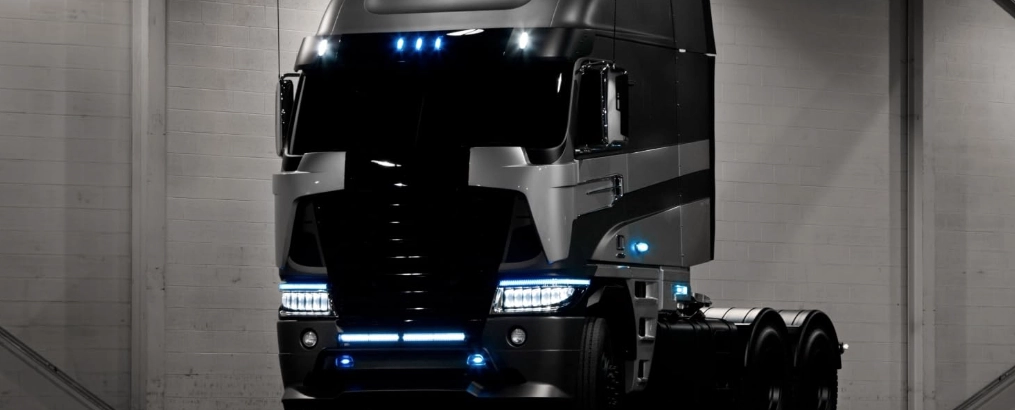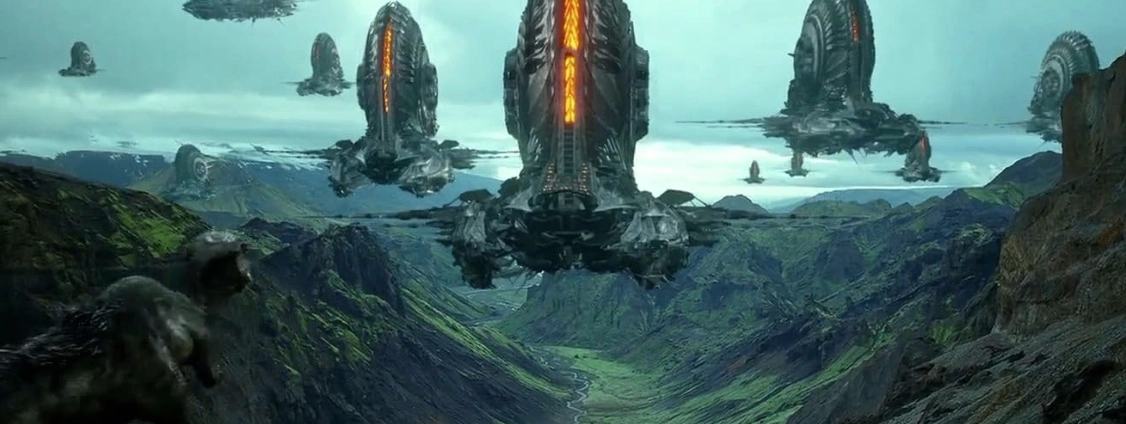The Beauty of Machinery: Visual, Functional, Engineering, Power, and Art
The allure of machinery extends far beyond its utilitarian purpose. It's a captivating blend of form and function, a testament to human ingenuity, and a source of aesthetic pleasure that resonates deeply with our appreciation for order, precision, and power. Mechanical beauty isn't just about gleaming chrome or intricate gears; it's a multifaceted concept encompassing visual appeal, functional elegance, engineering brilliance, industrial grandeur, the synergy between humans and machines, and its profound artistic and cultural representation.

The Multifaceted Beauty of Machinery
Mechanical beauty manifests in diverse forms, each contributing to its overall captivating nature. We can appreciate it through:
Visual Aesthetics: The immediate and striking appeal of machinery through its form, materials, and motion.
Functional Beauty: The elegance and efficiency inherent in well-designed machines that perform their tasks flawlessly.
Engineering and Technical Beauty: The admiration for the human intellect and skill embodied in complex mechanical systems.
Industrial Scale and Power: The awe-inspiring grandeur of large-scale industrial machinery and infrastructure.
Human-Machine Interaction: The fascinating interplay and collaboration between humans and machines.
Artistic and Cultural Representation: The symbolic and metaphorical power of machinery in art, film, and culture.
Visual Aesthetics: A Symphony of Form and Motion
Precise Structures and Lines: Machinery often boasts intricate structures composed of meticulously arranged parts. Gears meshing, bearings rotating, and pipes tracing elegant paths all contribute to a sense of order and geometric harmony. This is not mere functionality; it's a visual language of precision and intent.
Materials and Textures: The choice of materials—gleaming metal, robust plastic, or clear glass—and their surface treatments—polished chrome, weathered steel, or brushed aluminum—impart unique textures and sheens. The cold luster of metal, the patina of aged gears, or the ethereal quality of steam all contribute to the visual allure.
Dynamics of Motion: The rhythmic dance of machinery in motion possesses a captivating dynamism. The cyclical rotation of wheels, the reciprocating motion of pistons, the powerful surge of a turbine—these movements are not just functional; they are visually arresting, embodying energy and purpose.
Color and Light: The inherent colors of materials, enhanced by coatings, rust, or oxidation, and the interplay of light across mechanical surfaces create captivating visual effects. Light reflecting off polished surfaces, shadows cast by intricate components—these elements add depth and drama to mechanical forms.
These visual elements are masterfully captured in cinema. "Metropolis" (1927), with its towering mechanical cityscapes and rhythmic factory scenes, is a prime example of early cinematic exploration of mechanical aesthetics. "Modern Times" (1936), while satirical, highlights the visual impact of industrial machinery. More recently, films like "Blade Runner" (1982) and "Blade Runner 2049" (2017), with their cyberpunk urban landscapes, and animations like "Steamboy" (2004) and "Howl's Moving Castle" (2004) showcase intricate mechanical designs as integral parts of their visual storytelling.

Functional Beauty: Elegance in Efficiency
Efficiency and Utility: At its core, mechanical design is about achieving functionality. A machine that performs its task flawlessly, efficiently, and reliably possesses an inherent beauty. This beauty lies in the optimized design, where every component contributes to the overall purpose with minimal waste and maximum effect.
Precision and Complexity: The intricate workings of complex machinery—watches, engines, computers—reveal a different kind of beauty. The sheer number of interconnected parts, working in perfect synchronicity to achieve a complex outcome, is a testament to engineering prowess and a source of fascination.
Power and Control: Large-scale machinery, like excavators, cranes, ships, and aircraft, embody raw power and humanity's ability to control immense forces. This sense of power, harnessed and directed, is undeniably awe-inspiring and contributes to the mechanical aesthetic.
The functional beauty of machinery is celebrated in films that highlight engineering achievements. "Ford v Ferrari" (2019) beautifully illustrates the pursuit of functional perfection in race car design, where every curve and component is optimized for speed and performance. Documentaries focusing on engineering marvels, like the "Megastructures" series, further emphasize the beauty inherent in functional design and large-scale engineering projects.
Engineering and Technical Beauty: The Triumph of Intellect
Human Ingenuity Embodied: Machinery is a tangible manifestation of human intellect and creativity. From initial concept to final product, its creation involves countless hours of cavity design, calculation, and refinement by engineers and technicians. This intellectual investment is a key component of mechanical beauty.
Problem Solving and Efficiency Enhancement: Machines are invented and implemented to solve practical problems, enhance productivity, and improve human lives. This problem-solving aspect, the ability of machinery to overcome limitations and streamline processes, is a significant source of its aesthetic value.
Continuous Evolution and Innovation: Mechanical technology is in a perpetual state of evolution. New materials, designs, and technologies constantly emerge, driving machinery to become more efficient, powerful, and sophisticated. This ongoing innovation and progress contribute to the dynamic and forward-looking beauty of machinery.

Films often celebrate this engineering and technical beauty by showcasing groundbreaking technologies and ambitious projects. "2001: A Space Odyssey", with its depiction of advanced spacecraft and shaft space stations, embodies the awe-inspiring potential of human engineering in space exploration. Documentaries focusing on industrial achievements and science fiction films envisioning future technologies further amplify this appreciation for engineering and technical prowess.
Industrial Scale and Power: Grandeur and Awe
Magnificent Industrial Landscapes: Vast impeller factories, sprawling mines, bustling ports, extensive railway networks, and towering bridges create awe-inspiring industrial landscapes. The sheer scale of these structures, often dwarfing human figures, evokes a sense of grandeur and power, reflecting the might of industrial civilization.
Immense Mechanical Strength: Colossal machines—giant ships, aircraft carriers, massive excavators, towering cranes—demonstrate raw mechanical power and productive capacity. This sheer force, capable of moving mountains and shaping landscapes, is inherently captivating and beautiful in its magnitude.
The grandeur of industrial scale and power is often depicted in films to convey both awe and a sense of overwhelming force. "Metropolis" again serves as a powerful example, with its depiction of a city dominated by massive machinery. "Dune" (2021), with its portrayal of the Harkonnen's industrial world, presents a darker, more imposing vision of industrial might. Documentaries showcasing mega-projects, like "Megastructures", celebrate the sheer scale and ambition of human engineering endeavors.
Human-Machine Interaction: Synergy and Control
Image: A pilot in a cockpit, symbolizing the intricate collaboration between humans and machines.
Collaboration and Mastery: The interaction between humans and machines, where humans operate, control, and guide complex systems, is a captivating display of synergy. Driving a car, operating a lathe, piloting an aircraft—these actions showcase human skill and intelligence in partnership with mechanical capability. This collaboration highlights both human mastery and the responsive nature of well-designed machines.
Emotion and Anthropomorphism: In some artistic representations, machines are imbued with emotions and human-like qualities, particularly in the form of robots and AI. This anthropomorphism can evoke empathy and fascination, exploring the evolving relationship between humans and their creations. This blending of the mechanical and the human form can create a unique and poignant beauty.
Films often explore the dynamic interplay between humans and machines. "Ford v Ferrari" again illustrates the intimate connection between driver and machine, where the driver's skill and the car's engineering work in perfect harmony. "WALL-E" (2008) anthropomorphizes a robot, making it endearing and relatable, while "Ex Machina" delves into the complex emotional and ethical implications of human-like AI, blurring the lines between human and machine beauty.

Artistic and Cultural Representation: Symbols of Progress and Imagination
Inspiration for Artistic Creation: Machinery, as a symbol of modernity and progress, has long served as a muse for artists across various disciplines. From painting and sculpture to photography, movie, and animation, mechanical forms and concepts have been explored and celebrated, reflecting diverse artistic interpretations of mechanical beauty.
Cultural Symbols and Zeitgeist: Throughout history, machinery has embodied different cultural meanings and reflected the spirit of various eras. The steam engine symbolized the Industrial Revolution, the automobile represents modern mobility, and robots embody futuristic technology. As cultural symbols, machines carry aesthetic weight and reflect societal values and aspirations.
The artistic and cultural significance of machinery is evident in numerous films that use mechanical imagery to convey deeper themes. The movies mentioned throughout this article, from "Metropolis" to "WALL-E", all utilize mechanical aesthetics to explore societal anxieties, technological advancements, and the human condition. These films demonstrate how mechanical beauty transcends mere visual appeal, becoming a powerful tool for artistic expression and cultural commentary.
Key Elements of Mechanical Beauty in Detail
| Aspect of Mechanical Beauty | Description | Examples |
|---|---|---|
| Visual Aesthetics | Appreciation through form, materials, motion, color, and light. | Clock mechanisms, vintage cars, futuristic robots, industrial architecture, Blade Runner 2049, Steamboy. |
| Functional Beauty | Elegance in efficient and reliable performance, precision in complex systems, power and control. | High-speed trains, jet engines, precision instruments, large-scale machinery, Ford v Ferrari, engineering documentaries. |
| Engineering & Technical Beauty | Admiration for human ingenuity, problem-solving capabilities, and continuous innovation in mechanical design. | Spacecraft design, complex algorithms, automated factories, 2001: A Space Odyssey, industrial documentaries. |
| Industrial Scale & Power | Awe-inspiring grandeur of massive industrial landscapes and powerful machinery. | Factories, mines, bridges, skyscrapers, large ships, Metropolis, Dune, Megastructures series. |
| Human-Machine Interaction | Synergy between human skill and machine capability, emotional connections with anthropomorphized machines. | Piloting aircraft, operating machinery, robots, AI, Ford v Ferrari, WALL-E, Ex Machina. |
| Artistic & Cultural Representation | Symbolic representation of progress, modernity, and human imagination in art and culture. | Steampunk art, cyberpunk aesthetics, industrial photography, Modern Times, Ghost in the Shell. |

KeSu: Expert Partner for Custom Mechanical Parts
KeSu specializes in manufacturing high-quality mechanical parts, using advanced CNC machining and rapid prototyping techniques. With a focus on precision, durability, and custom production solutions, we cater to diverse custom parts machining requirements. Partner with our CNC factory for reliable, cost-effective machining parts that enhance performance and meet strict industry standards.
Further exploration into specific types of machinery, industrial eras, and artistic representations can reveal even deeper layers of this fascinating aesthetic, ensuring that the beauty of mechanics remains a source of wonder and inspiration for generations to come.
Frequently Asked Questions (FAQ)
What exactly defines mechanical beauty?
Mechanical beauty is a complex concept that encompasses visual aesthetics, functional elegance, engineering brilliance, industrial grandeur, human-machine interaction, and artistic representation. It's the appreciation of machinery not just for its utility, but for its form, function, and the human ingenuity it embodies.
Where can we see examples of mechanical beauty in everyday life?
Mechanical beauty is all around us! Consider the elegant design of a wristwatch, the powerful engine of a car, the intricate workings of a clock, the functional design of a bicycle, the soaring structure of a bridge, or the complex systems within a modern factory. Even everyday tools and appliances can exhibit mechanical beauty in their efficient and thoughtful design.
Why is mechanical beauty considered important or significant?
Mechanical beauty is significant because it reflects human creativity, ingenuity, and our drive for progress. It inspires awe and wonder, showcasing our ability to shape the world around us. Furthermore, it serves as a powerful source of artistic inspiration and cultural symbolism, reflecting societal values and technological advancements.
How do films typically portray mechanical beauty?
Films portray mechanical beauty in various ways, often depending on genre and theme. Science fiction films frequently showcase futuristic and technologically advanced machinery. Industrial films and documentaries highlight the scale and efficiency of industrial processes. Steampunk and cyberpunk genres celebrate Victorian-era and futuristic mechanical aesthetics, respectively. Many films use mechanical imagery to convey themes of progress, power, humanity's relationship with technology, and the beauty of engineering achievements.